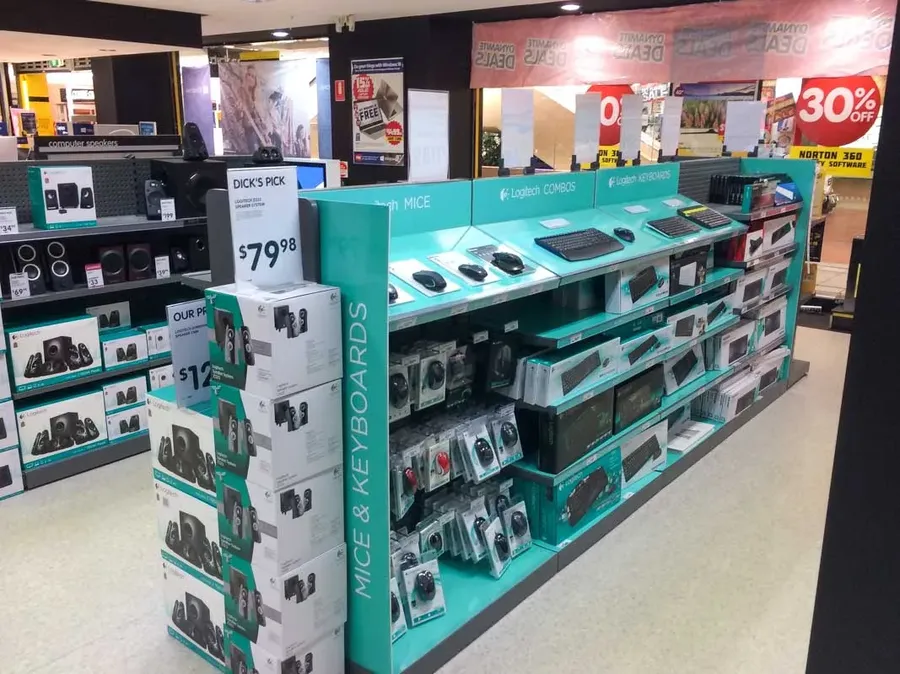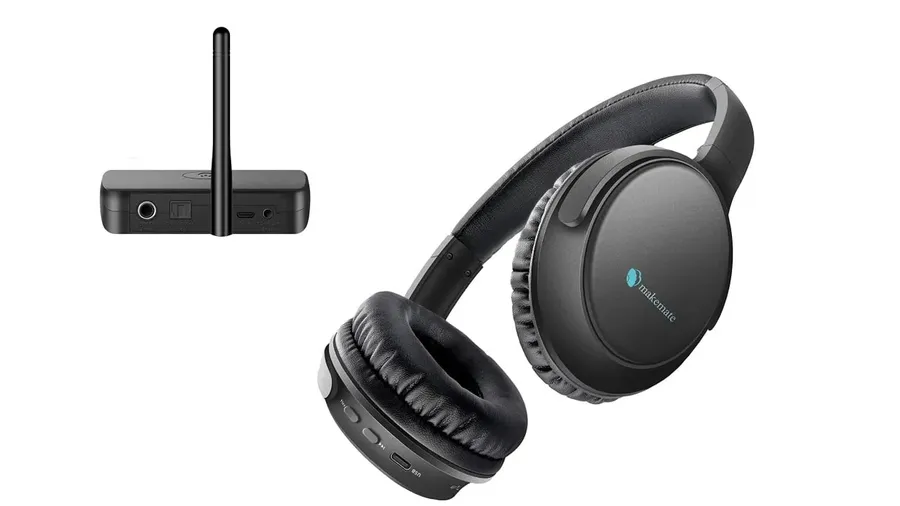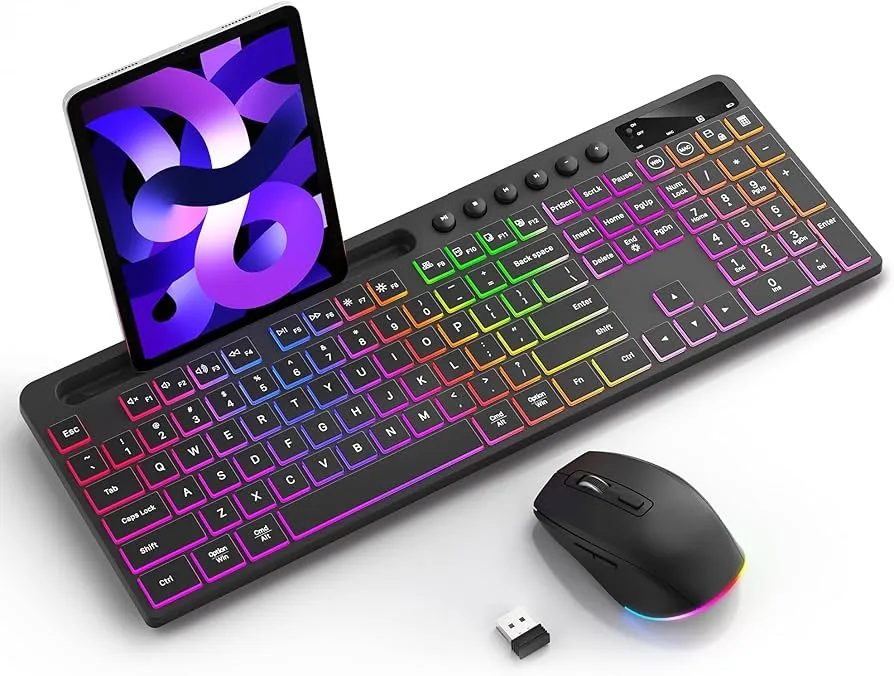Comprehensive Guide to All Electronic Items with Price: Find Your Tech Today

In our interconnected world, electronics have become indispensable, shaping our daily routines and work lives. From the smartphones we rely on for communication, often priced between $200 and $1500, to the laptops that enable productivity, typically ranging from $300 to over $2000, and smart TVs that entertain, ranging from $150 to upwards of $3000, electronic devices play a crucial role. This guide explores the vast landscape of electronic items with price, helping you navigate your options and make informed purchases. Let's dive into this essential aspect of modern life, unlocking the power of technology with transparent pricing.
Understanding the Electronic Landscape: Key Product Categories

The modern electronics market encompasses a vast array of products, broadly categorized into consumer electronics, home appliances, and computer hardware. This section provides a foundational understanding of these categories, outlining the types of electronic goods available and their typical applications.
Consumer electronics are primarily focused on entertainment, communication, and personal use. This category includes devices like televisions, smartphones, audio equipment, and wearables. Home appliances, on the other hand, are designed to simplify household tasks and enhance convenience, featuring items such as refrigerators, washing machines, and ovens. The third major category, computer hardware, revolves around computing devices and their peripherals, including laptops, desktops, monitors, and printers. Each category serves distinct needs and boasts a wide range of products with varying features and price points.
Consumer Electronics: Your Entertainment and Communication Hub

Consumer electronics form the core of our modern entertainment and communication systems. This category encompasses a wide range of devices designed for personal enjoyment, connectivity, and information access. Understanding the options within this space—from smart TVs to audio equipment—is essential for making informed purchase decisions, particularly given the broad spectrum of features and price points.
| Product Category | Price Range | Key Features | Typical Use Cases |
|---|---|---|---|
| Smart TVs | $150 - $3000+ | 4K/8K resolution, HDR, Smart TV OS, various screen sizes | Home entertainment, streaming, gaming |
| Smartphones | $200 - $1500 | Advanced cameras, high-resolution displays, mobile computing, cellular connectivity | Communication, media consumption, mobile productivity |
| Headphones | $20 - $500 | Wired/wireless, noise cancellation, various form factors (in-ear, on-ear, over-ear) | Listening to audio, communication, personal audio |
| Audio Equipment (Speakers, Soundbars, etc.) | $50 - $2000+ | Stereo/surround sound, Bluetooth connectivity, various form factors | Audio playback, home entertainment |
Understanding Smart TV Prices and Features
Smart TVs offer a diverse range of options with prices influenced by screen size, resolution, panel type (LED, OLED, QLED), and smart features. Entry-level models are typically 32-43 inches, with basic smart functionality, whereas high-end models exceed 65 inches, include advanced features like 4K or 8K resolution, and support HDR.
- Budget TVs ($150-$500)
Primarily offer 1080p or 4K resolution, basic smart features, and are suitable for small to medium rooms. - Mid-Range TVs ($500-$1500)
Include better screen technology, improved sound, and a broader range of smart applications. - High-End TVs ($1500+)
Provide superior image quality (8K or advanced OLED/QLED panels), enhanced audio systems, and high-performance processors for seamless streaming and gaming.
Smartphone Price Points and Capabilities
Smartphones are categorized by price based on processor speed, camera quality, storage capacity, and display features. Budget-friendly options focus on core functionalities, while premium models are equipped with state-of-the-art technology, including high-resolution displays, advanced camera systems, and fast processors.
- Entry-Level Smartphones ($200-$400)
Basic capabilities for daily communication and basic app usage. - Mid-Range Smartphones ($400-$800)
Offer better camera systems, higher-resolution displays, and improved processor speeds for smoother multitasking. - High-End Smartphones ($800+)
Feature top-tier cameras, high-refresh-rate displays, fast processors, and premium features like wireless charging and water resistance.
Audio Equipment: Headphones and Sound Systems
Headphones and audio equipment have a broad price range depending on audio quality, build quality, and features like noise cancellation. Headphones vary in style from in-ear earbuds to over-ear headsets, while audio systems include various speakers, soundbars, and home theater setups.
- Budget Headphones ($20-$100)
Basic sound quality, suitable for casual listening. - Mid-Range Headphones ($100-$300)
Enhanced audio quality, better comfort, and may include noise cancellation. - Premium Headphones ($300+)
Superior sound quality, advanced features like active noise cancellation, and high-quality construction. - Audio Systems ($50-$2000+)
Entry-level options may include compact speakers and soundbars. High-end options are characterized by large speakers, amplifiers, and multi-channel surround sound setups.
Home Appliances: Smart Living with Modern Conveniences

The realm of home appliances extends far beyond mere functionality; it now encompasses smart technologies designed to enhance convenience, efficiency, and overall quality of life. This section explores a variety of modern home appliances, focusing on their features, price ranges, and the benefits of smart home integration.
The home appliance market is rapidly evolving, with innovative features and technologies driving demand. This evolution not only brings increased convenience but also contributes to energy efficiency and cost savings in the long term. Below, we delve into specific categories with indicative price ranges to guide your purchasing decisions.
| Appliance Category | Description | Typical Price Range | Smart Features |
|---|---|---|---|
| Refrigerators | Essential for food storage, available in various sizes and configurations. | $500 - $3000+ | Smart connectivity, temperature control, inventory management, door-in-door designs. |
| Washing Machines | Automated cleaning of clothes with various cycles and load capacities. | $300 - $1500 | Smart wash cycles, remote control, automated detergent dispensing, error diagnostics. |
| Ovens | Used for cooking and baking with varied heating methods. | $200 - $2000+ | Smart controls, pre-programmed cooking modes, remote operation, internal cameras. |
| Dishwashers | Automated cleaning of dishes with various cycle options. | $300 - $1800 | Smart wash cycles, leak detection, remote control, energy efficiency modes. |
| Small Kitchen Appliances | Includes microwaves, coffee machines, blenders, and more. | $50 - $500+ | Smart connectivity, programmable functions, voice control. |
These price ranges are indicative and can fluctuate based on brand, features, and market conditions. High-end models frequently incorporate advanced technologies and smart integrations, while entry-level models offer basic functionality at a lower cost. Smart features, such as Wi-Fi connectivity and voice control, are becoming increasingly prevalent across appliance categories, providing seamless integration into modern smart homes.
Purchasing decisions should be made considering individual requirements, budget limitations, and the overall desire for smart home integration. Investing in modern, smart home appliances can lead to enhanced convenience, time-saving, and ultimately, a more comfortable and efficient living environment.
Computing and Accessories: Powering Your Work and Play

The realm of computing and accessories is vast, encompassing devices essential for both work and leisure. This section provides a comprehensive overview of computer equipment, including laptops, desktops, monitors, and peripherals like printers, and examines the key factors influencing their price.
| Category | Price Range | Key Factors Affecting Price | Typical Use Case |
|---|---|---|---|
| Laptops | $300 to $2000+ | Processor (CPU), RAM, Storage (SSD/HDD), Display Quality, Graphics Card, Brand | Portable computing, work, school, personal use |
| Desktops | $400 to $3000+ | Processor (CPU), RAM, Storage (SSD/HDD), Graphics Card, Case, Motherboard, Power Supply | Work, gaming, content creation, heavy processing tasks |
| Monitors | $100 to $1500+ | Resolution, Panel Type (IPS, TN, VA), Refresh Rate, Size, Response Time, Color Accuracy | Visual display for computers, gaming, graphic design |
| Printers | $50 to $500+ | Type (Inkjet, Laser), Print Speed, Print Quality, Features (Wireless, Duplex), Ink Cost | Document printing, photo printing, home and office use |
| Accessories (Keyboards, Mice) | $20 to $300+ | Type (Mechanical, Membrane), Ergonomics, Wireless/Wired, Features (Programmable keys, DPI) | User interface for computers |
Understanding these parameters will enable you to navigate the market and make choices that best fit your specific needs and budget.
Where to Buy: Online vs. Brick-and-Mortar Electronic Stores

The decision of where to purchase electronic items, whether online or in physical stores, involves weighing factors like convenience, pricing strategies, and customer service. Both options offer distinct advantages and disadvantages that cater to different consumer preferences and needs. This section will explore these differences, specifically focusing on major retailers like Amazon, Best Buy, and Walmart, to provide a comprehensive guide for making informed purchasing decisions.
| Feature | Online Stores (e.g., Amazon) | Brick-and-Mortar Stores (e.g., Best Buy, Walmart) |
|---|---|---|
| Convenience | 24/7 access, shop from anywhere, direct delivery to your door | Limited hours, require physical travel, immediate product availability |
| Pricing | Often competitive, frequent sales and discounts, easy price comparison tools | May have higher prices, potential for in-store discounts, price matching often available |
| Customer Service | Primarily online or phone support, may require shipping items back for returns, customer reviews readily available | Face-to-face interactions, immediate assistance with problems, potential for on-the-spot replacements |
| Product Experience | Reliance on product images and descriptions, customer reviews crucial, less hands-on experience before purchase | Opportunity to physically examine products before buying, ability to test features or demo items, immediate gratification |
| Returns and Warranties | Return policies may vary, often require shipping products back, specific procedures to follow | Easier return process in many instances, less shipping concerns, in-person assistance available |
Price Comparison and Deals: Finding the Best Value
Navigating the world of electronic item pricing requires a strategic approach to ensure you're getting the best possible value. This section provides practical tips and tools for comparing prices across retailers, identifying discounts, and understanding the crucial aspects of warranties and return policies, empowering you to make informed purchasing decisions.
- Price Comparison Websites and Tools
Utilize dedicated price comparison websites and browser extensions that track prices across multiple retailers. These tools often display historical price data, helping you identify if a current deal is truly a good one or if prices are inflated. - Timing Your Purchase
Be aware of seasonal sales events (such as Black Friday, Cyber Monday, or back-to-school deals) where electronics are often significantly discounted. Monitor specific product prices ahead of these events to identify real bargains and avoid artificially inflated prices. - Manufacturer Refurbished Items
Consider purchasing manufacturer-refurbished items directly from reputable sources or retailers. These products are often rigorously tested and come with a warranty, offering substantial savings compared to new items. - Open Box Deals
Explore 'open box' deals offered by retailers. These items are often returned by customers and are available at discounted prices. Check the retailer's return policy and inspect the item thoroughly before purchase to ensure it is in acceptable condition. - Understanding Warranties
Familiarize yourself with the different types of warranties offered by manufacturers and retailers. Check the duration, what it covers, and the process for claims. Understanding warranty terms can save you money and provide peace of mind. - Return Policies
Always check the return policy of the retailer before making a purchase. Pay special attention to the return window, whether they offer free returns and any conditions regarding the state of the product when it is returned. - Coupon Codes and Promotions
Search for coupon codes, discounts, and promotional offers before making a purchase. Many retailers offer deals through their websites, email newsletters, or third-party coupon sites. Use these to bring down your costs and secure a cheaper item.
Understanding Key Specifications and Features: What to Look For
Navigating the world of electronics requires an understanding of key specifications and features that directly impact both price and utility. This section provides a practical guide to help you identify what’s most important based on your needs, ensuring you make informed purchasing decisions.
Below are some key specifications you should consider when evaluating different electronic devices:
- Smart TVs
Screen resolution (4K, 8K), refresh rate (60Hz, 120Hz), HDR support (Dolby Vision, HDR10+), panel type (LED, OLED), and smart platform (e.g., Android TV, Roku). Higher resolution and refresh rates offer a better viewing experience, while advanced HDR enhances color and contrast. - Smartphones
Processor (e.g., Snapdragon, A-series chips), RAM (4GB, 8GB, 12GB+), storage capacity (64GB, 256GB, 512GB+), camera resolution (megapixels, sensor size), battery capacity (mAh), and display type (LCD, OLED). More powerful processors and RAM ensure smoother performance, while camera specs determine image quality. - Headphones
Audio codecs (AAC, aptX), driver size, frequency response, impedance, noise cancellation (active or passive), and connection type (wired or wireless). High quality codecs and bigger drivers provide better sound, and good noise cancellation is essential for travel. - Laptops
Processor (Intel Core i5, i7, i9, AMD Ryzen 5, 7, 9), RAM (8GB, 16GB, 32GB+), storage type (SSD, HDD), screen size and resolution, and graphics card. SSDs are faster than HDDs, and a dedicated graphics card is important for gaming or video editing - Refrigerators
Capacity (cubic feet), energy efficiency rating, type (top freezer, bottom freezer, side-by-side, french door), and additional features like smart controls or water/ice dispensers. Energy efficiency can lead to significant savings on electricity bills, while capacity should match household needs.
| Feature | Impact on Price | Impact on Utility |
|---|---|---|
| High-Resolution Screen | Increases price | Provides sharper images and more detail |
| Fast Processor | Increases price | Enables quicker processing and faster performance |
| Large RAM | Increases price | Enhances multitasking capabilities |
| Large Storage Capacity | Increases price | Allows for more data, apps, or media |
| Advanced Camera Sensors | Increases price | Improves image quality and low-light performance |
| Energy Efficiency | May have higher initial price | Reduces long-term energy costs |
Understanding these specifications will empower you to select electronic items that best align with your needs and budget. Always check product reviews and comparisons for deeper insights before making a purchase decision.
Frequently Asked Questions About Electronic Items and Pricing
This section addresses common questions and concerns users have when purchasing electronic items, focusing on pricing, popular products, deals, and policies to assist in informed decision-making.
- What are the most popular electronic items currently?
Popular electronic items vary with trends and seasons but generally include the latest smartphones (such as the iPhone and Samsung Galaxy series), smart TVs (especially 4K and OLED models), noise-canceling headphones, and various smart home devices (like smart speakers, smart lighting, and smart thermostats). Gaming consoles, laptops, and tablets also consistently remain popular. - Where can I find the best deals on electronics?
The best deals on electronics can often be found during major shopping holidays like Black Friday, Cyber Monday, and Amazon Prime Day. Retailers such as Amazon, Best Buy, Walmart, and Target frequently offer sales and discounts. Also, manufacturer websites sometimes provide direct-to-consumer deals. Regularly checking these sources can help uncover the best prices. - How do warranties and return policies differ across different stores?
Warranty and return policies vary significantly between retailers. Most major retailers offer a standard 30-day return window, but some may extend it during holiday seasons. Manufacturer warranties usually cover defects for a specified period (often one year), and some stores offer extended warranty plans for an extra cost. Always read the fine print to understand what is covered under each warranty and the specific conditions for returning an item to each store. - What factors should I consider when comparing prices for electronic items?
When comparing prices, consider not only the initial cost but also factors like shipping fees, sales tax, warranty coverage, and the return policy. Checking for any additional costs like extended warranties can influence your overall price. Additionally, assess the credibility of the seller, especially when purchasing online, to ensure product authenticity and customer satisfaction. - Are refurbished electronic items a good way to save money?
Refurbished electronic items can offer a significant cost saving. However, ensure that the items come with a warranty to reduce any risks. Evaluate the seller's reputation and carefully review the condition and the level of refurbishment to ensure it meets your requirements. Always compare the price of the refurbished model to a new one and decide if the cost saving is worth any potential disadvantages. - How can I ensure I'm getting a legitimate product when buying electronics online?
To ensure you're buying legitimate electronics online, only buy from reputable sources such as authorized retailers or the brand's website. Look for indicators of authenticity such as seller ratings, customer reviews, and the inclusion of official seals or labels. Be wary of deals that appear too good to be true, as these may be signs of counterfeit products. Verify the seller's contact information and make sure the site uses a secure payment gateway. - Is it better to buy electronics online or in physical stores?
The choice between online and physical stores depends on your preferences. Online shopping offers convenience, typically broader selection, and competitive pricing, while brick-and-mortar stores allow for physical inspection of the product before purchase, instant gratification, and often better customer service for immediate issues. The best option aligns with your priorities, whether that's convenience, price or the peace of mind with immediate assistance.
From smartphones ($200-$1500) that keep us connected to laptops ($300-$2000+) that boost our productivity, and smart TVs ($150-$3000+) that deliver entertainment, electronic items with price are integral to modern living. Navigating this vast landscape requires understanding the different categories, price points, and where to find the best deals. Whether you’re shopping online or in-store, this comprehensive guide has equipped you to find exactly what you need with transparent pricing. Remember, staying informed and comparing your options ensures you get the best value for your money in this essential part of our lives.
 AnyPCBA
AnyPCBA